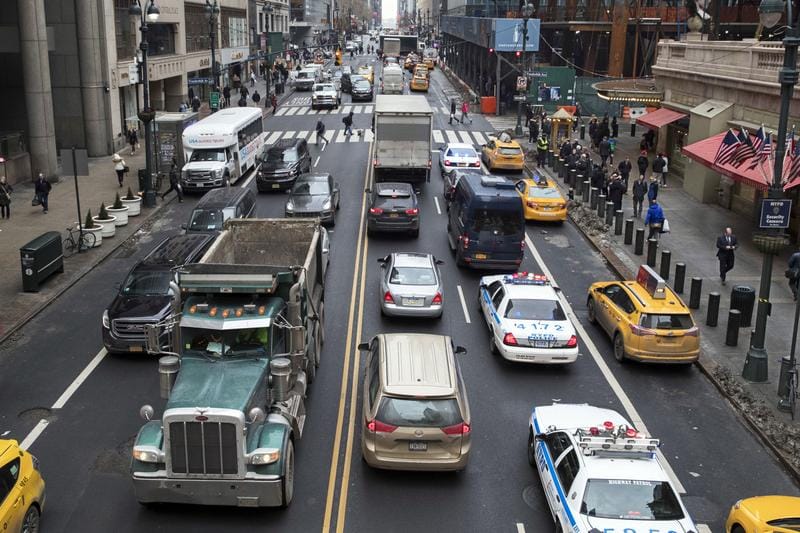
Traveling in New York is already expensive, but it just got worse: transportation authorities have approved a controversial $15 congestion toll for automobiles entering Manhattan’s busiest area, which will go into effect in mid-June. The Metropolitan Transportation Authority board voted 11-1 on Wednesday to implement the toll, which is intended to encourage the use of public transportation while also easing traffic in midtown and lower Manhattan, thereby lowering pollution.
New York City becomes the first city in the US to impose a congestion toll
The fee will be the first in an American city, and it is comparable to existing schemes in London, Stockholm, and Singapore. It must first obtain federal authority and establish toll-collection mechanisms.
All about New York’s $15 congestion toll?
Passengers and small commercial vehicles entering Manhattan south of 60th Street from Queens, Brooklyn, and neighboring New Jersey will be charged $15 during the day and $3.75 at night, in addition to any existing bridge or tunnel taxes.
Trucks and sightseeing buses will pay between $24 and $36 per day, with lower rates at night. Taxis will charge passengers $1.25 per journey into the zone, while ridesharing applications like Uber will be allowed to charge $2.50 per trip, according to the MTA.
Only emergency cars, those transporting disabled passengers, and specially designed city vehicles will be exempt. Low-income drivers who live in the congestion zone will be eligible for reduced rates.
MTA Chair and CEO Janno Lieber described the vote as “one of the most significant the board has ever undertaken,” and stated, “The MTA is ready.”
MTA Chair and CEO Janno Lieber described the vote as “one of the most significant the board has ever undertaken,” and said in a statement: “The MTA is ready.”
In preparation, 12 subway lines have been expanded, bus networks have been reconfigured, and commuter rail service from Long Island has been increased, according to the transit authority.
The MTA intends to generate more than $1 billion from the new toll and it will go towards improving subway station accessibility, modernizing subway signals, and supporting system expansions.
“One of the biggest goals of this is to finally attack congestion, but the other side of the equation is to invest more in transit,” Lieber said.
However, critics, particularly stressed-out commuters, have reacted angrily to the additional toll, and numerous lawsuits are already in the works.
In December 2017, Virginia officials slapped tolls on solitary commuters using Interstate 66 to get to the capital, Washington, but New York would be the first US metropolis to pay a congestion toll.
